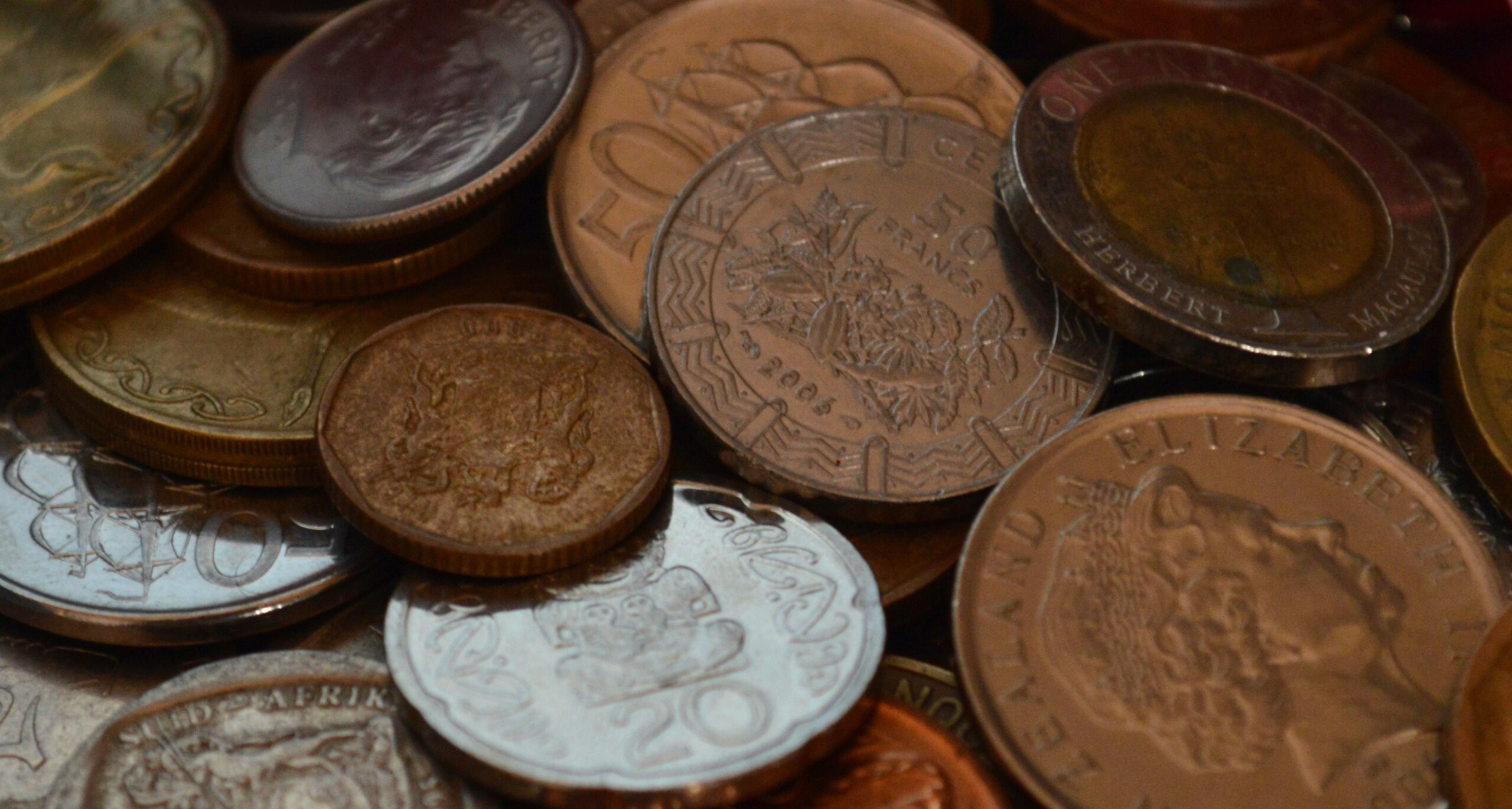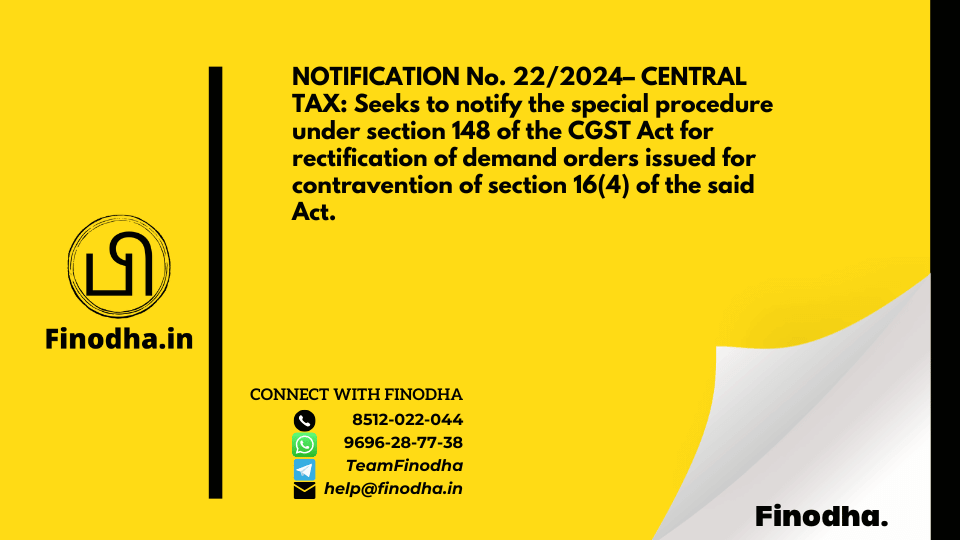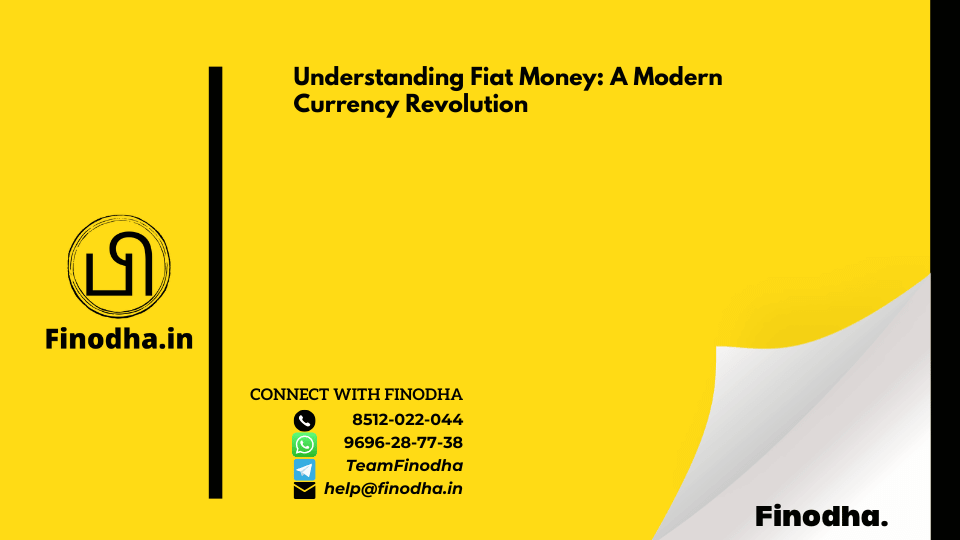Important Keyword: Fiat Money, Advantages of Fiat Money, Disadvantages Fiat Money.
Table of Contents

Introduction to Fiat Money
Fiat money, a term derived from the Latin word “fiat,” meaning “let it be done,” refers to a type of currency that derives its value from government regulation or law, rather than from a physical commodity such as gold or silver. Unlike commodity-backed currencies, whose value is intrinsically linked to tangible assets, fiat money holds value primarily because a government maintains it and people have confidence in its ability to act as a medium of exchange, a unit of account, and a store of value.
The significance of fiat money in the modern financial system is profound. It allows governments to exert greater control over their economies by influencing money supply and interest rates. For example, during economic crises, central banks can increase the money supply, thereby injecting liquidity into the market to stimulate growth. This flexibility is a pivotal characteristic of fiat currencies, distinguishing them from their commodity-based predecessors, which are constrained by the availability of the underlying physical assets.
The value of fiat money is also influenced by several factors, including supply and demand dynamics and the overall stability of the government that issues it. When a government is stable and its economic policies are credible, the public is more likely to trust the currency, reinforcing its value. Conversely, hyperinflation, political instability, and poor financial management can undermine public confidence, leading to a decline in the currency’s value. Overall, the relationship between government policy and public trust shapes the complex nature of fiat money, making it an essential component of contemporary economic frameworks.
The Evolution of Money: From Commodities to Fiat
Throughout history, the concept of money has undergone significant transformations, reflecting the changing dynamics of economies and societies. Initially, various civilizations relied on commodities such as gold, silver, and other tangible items as mediums of exchange. These commodities held intrinsic value, allowing individuals to trade based on the inherent worth of the goods themselves. However, the limitations of commodity money—such as difficulty of transportation, divisibility, and the risk of scarcity—prompted the evolution toward more abstract forms of currency.
The transition from physical commodities to fiat currency marked a pivotal moment in the history of money. Governments began minting coins, creating standardized currency that represented a promise to pay a specific value. Coins facilitated trade by providing a reliable and uniform medium of exchange, yet they retained a relation to the intrinsic value of precious metals. This system paved the way for the development of paper currency, a significant shift that further detached money from physical assets.
Fiat money, derived from the Latin word “fiat” meaning “let it be done,” is currency that a government has declared to be legal tender. Unlike its commodity predecessors, fiat currency has no intrinsic value and is not backed by a physical commodity. Instead, its value is derived solely from the trust and confidence that individuals and businesses place in the stability of the issuing government. This system allows for greater flexibility in monetary policy, enabling governments to regulate the money supply to respond to economic conditions.
As economies grew more complex and interconnected, the reliance on fiat currency became increasingly prominent. The shift towards this modern form of money exemplifies how human innovation continues to shape financial systems, facilitating trade and commerce in an evolving global economy.
How Fiat Money Works
Fiat money operates based on the trust and agreement of the people who use it, rather than being backed by a physical commodity such as gold or silver. Its intrinsic value is not derived from any material substance; instead, it is grounded in the confidence that individuals and entities have in the issuing government and central banks. This form of currency, therefore, is considered inconvertible, meaning it cannot be exchanged for a fixed quantity of a commodity. This characteristic highlights the unique relationship between fiat money and the economic agents interacting within a market.
The value of fiat money is chiefly determined by supply and demand dynamics in the market. When a government issues more money without corresponding economic growth, the value of that currency can decline, leading to inflation. Conversely, if the money supply is controlled effectively and kept in line with economic performance, the currency can maintain its value over time. This balance is monitored by central banks, which utilize various monetary policy tools to manage interest rates and influence economic activity.
In commercial transactions, the efficacy of fiat money relies on mutual agreement between parties regarding its worth. When individuals engage in trade, they trust that the currency being exchanged will hold value and be accepted by others in future transactions. This trust creates a stable environment for commerce. For instance, when a consumer purchases goods or services with cash or electronic payment, they rely on the assurance that the recipient will consider that currency as valuable. Therefore, fiat currencies derive their worth not from physical backing but rather from societal consensus and regulatory frameworks that support their circulation.
Advantages of Fiat Money
Fiat money, as a contemporary form of currency, presents numerous advantages that bolster its usage over alternative monetary systems, such as commodity-based currencies. One prominent benefit of fiat currency is its ability to serve as a reliable medium of exchange. Unlike precious metals, fiat money is universally accepted in transactions and does not vary in utility; its value is derived rather from the trust and recognition it garners from the public and government backing. This universality enables seamless trade and commerce, making the economy more fluid and dynamic.
Furthermore, fiat money plays a crucial role in providing a unit of account. This means it establishes a standard numerical value that enables individuals and businesses to set prices and make informed financial decisions. Such a standardized measurement facilitates effective budgeting, accounting, and financial reporting, promoting overall economic stability.
Another significant advantage of fiat currency is its capacity to store value. While traditional commodities may fluctuate in value based on market changes, fiat money allows individuals to retain their purchasing power over time, assuming stable economic conditions. This ability contributes to consumer and business confidence, which are essential for economic growth.
Crucially, fiat money grants central banks the authority to implement monetary policy effectively. Through manipulating interest rates and influencing money supply, central banks can respond agilely to economic fluctuations, thereby controlling inflation and sustaining economic growth. The advantages of seigniorage, the profit made by authorities when issuing currency, further strengthen government funds, allowing for public spending on infrastructure, education, and health.
Thus, the advantages of fiat money are manifold, providing a flexible framework that enhances economic stability, maximizes transaction efficiency, and empowers monetary authorities to steer the overall economy effectively.
Disadvantages of Fiat Money
While fiat money has transformed modern economies, it is not without significant disadvantages, which merit careful consideration. One of the most pressing concerns surrounding fiat money is the risk of inflation. Unlike commodity money, which is backed by physical assets such as gold or silver, fiat money’s value is determined by government decree and public trust. This intrinsic vulnerability means that if a government opts to print excessive amounts of currency, which is sometimes done to cover deficits or stimulate economic activity, it can lead to rampant inflation. As more currency enters circulation, the purchasing power of money decreases, causing prices to rise and eroding consumer savings.
Another issue is the lack of intrinsic value associated with fiat currencies. Since they are not backed by a tangible commodity, their value is based solely on the confidence that individuals and businesses have in the issuing government. This dependence means that should a government experience political instability, mismanagement, or significant public distrust, the value of its fiat money can plummet, leading to severe economic consequences for citizens. This lack of security can deter or diminish consumer confidence, prompting people to seek alternative forms of currency or value storage, such as gold or cryptocurrencies.
Additionally, the reliance on government stability poses a risk for fiat money systems. Political unrest, wars, or economic downturns can undermine the government’s ability to maintain currency value, creating uncertainty in the market. In such scenarios, the implications can be profound—spurring individuals to withdraw their funds or even trade in foreign currencies, further weakening the local economy. Consequently, while fiat money serves as the foundation of modern monetary systems, it remains vulnerable to inflationary pressures, questions of intrinsic value, and the overarching stability of the government that issues it.
Real-World Examples of Fiat Money in India
Fiat money, notably represented by the Indian Rupee (INR), plays a pivotal role in the Indian economy, functioning as the primary medium of exchange for goods and services. The INR is officially issued by the Reserve Bank of India and is recognized by law as currency despite having no intrinsic value. Its acceptance by individuals and businesses exemplifies everyday applications of fiat currency in India.
One of the most relatable examples of fiat money in India can be observed in daily transactions, such as purchasing groceries at local markets. Consumers regularly use the Indian Rupee to facilitate these exchanges, which reflects the trust and confidence placed in the currency. Prices of commodities are distinctly marked in INR, allowing seamless interactions between buyers and sellers. This trust in the Indian Rupee as a fiat currency enables smooth conduct of commerce, reinforcing its validity as an essential financial instrument.
Additionally, with the rapid advancement in digital payment systems, the use of fiat currency has evolved. Payment apps like Paytm and PhonePe allow users to perform cashless transactions using the Indian Rupee through their smartphones. These platforms have paved the way for a significant shift from traditional cash-based transactions to digital formats, highlighting how fiat money adapts to technological changes. As consumers engage in these digital payment methods, they are nonetheless utilizing the same fiat currency that has been the cornerstone of India’s economy.
Furthermore, businesses across India accept payments not only in cash but also through electronic modes, where the Indian Rupee remains the standard unit of currency. This practical interaction with fiat money underscores its relevance in modern economic activities, regardless of the medium used for transactions. In this manner, the Indian Rupee continues to exemplify how fiat currency operates effectively within the economic framework, adapting to consumers’ preferences and technological advancements in finance.
Common Questions About Fiat Money
Fiat money is a term that often raises a multitude of questions from individuals seeking to understand its nature and implications. One of the most common queries is, “What happens if a government collapses?” In such an event, the value of the fiat currency issued by that government may significantly diminish. When a government loses its economic stability, the confidence of both domestic and international stakeholders in its currency may wane. This loss of faith can result in hyperinflation, leading citizens to seek alternatives like foreign currency or even barter systems to conduct transactions. Consequently, the once stable value of fiat money can erode swiftly, leaving individuals with currency that has little purchasing power.
Another frequent question pertains to whether fiat money can lose all its value. While this scenario is unlikely to occur in a stable economy, it is theoretically possible under extreme circumstances. For example, if a government were to overshoot its fiscal policies or print currency excessively without corresponding economic growth, the money could become worthless. This phenomenon was observed in historical cases such as Zimbabwe in the late 2000s, where rampant hyperinflation rendered the currency virtually useless. Investors and citizens would find themselves in a precarious situation, with savings evaporating and the purchasing ability of their holdings diminished to negligible amounts.
Moreover, people might wonder about the mechanisms in place to prevent such outcomes. Central banks play a critical role in managing fiat money through monetary policy. They regulate the money supply and interest rates to maintain economic stability, acting swiftly to avert potential crises. Despite the inherent risks associated with fiat currencies, the ability to adapt and utilize economic strategies can serve as a buffer against total currency devaluation. In essence, while fiat money carries risks, particularly in political or economic turmoil, it also benefits from regulatory frameworks intended to safeguard its value.
Summary of Key Insights
Fiat money, a term derived from the Latin word “fiat,” meaning “let it be done,” refers to currency that is issued by a government but does not have intrinsic value, unlike commodities such as gold or silver. Its value is largely based on the trust and confidence of the people who use it, supported by the government’s guarantee rather than a physical commodity. This concept has significantly changed how currencies function in modern economies.
One of the primary advantages of fiat money is its flexibility in monetary policy. Governments and central banks can manage the supply of money to stabilize the economy by controlling inflation and fostering economic growth. This adaptability allows for quick responses to economic crises, providing a tool for stimulating financial activity during downturns. Additionally, fiat money facilitates international trade and investment, simplifying transactions across borders without the need for cumbersome commodity exchanges.
However, the use of fiat money also comes with notable disadvantages. The reliance on government backing means that if trust in a government falters, the currency can suffer significant devaluation. Instances of hyperinflation, where a fiat currency loses its purchasing power rapidly, have been observed throughout history, emphasizing the vulnerability of such systems. Furthermore, the non-tangible nature of fiat money can lead to economic disparities, where wealth accumulation can disproportionately benefit a privileged few.
In the contemporary financial landscape, fiat money plays a crucial role in shaping global economies. Its significance lies in its ability to facilitate everyday transactions, while also serving as a foundation for central banking systems around the world. Understanding the intricacies of fiat money not only illuminates its effects on economic stability but also highlights prominent debates regarding its efficacy compared to alternative currency forms such as cryptocurrencies.
Conclusion: The Future of Fiat Money
As we’ve examined throughout this discourse, fiat money has played a pivotal role in shaping contemporary economies. Unlike traditional commodity money, which is intrinsically valuable, fiat currency derives its worth from government decree and public trust. In a globalized economy, understanding the implications and mechanics of fiat money becomes increasingly significant. As international trade flourishes and financial systems grow ever more interconnected, the reliance on fiat currencies will continue to prevail, yet perhaps evolve alongside burgeoning technologies.
The emergence of digital currencies poses potential challenges and opportunities for fiat money. Cryptocurrencies, such as Bitcoin and Ethereum, represent a radical departure from traditional banking systems, offering decentralized alternatives that may appeal to a tech-savvy populace. These digital assets challenge conventional notions of currency, raising questions regarding stability, regulation, and acceptance. While fiat money maintains a firm grasp on power and influence within established economic frameworks, the question of its adaptability in an increasingly digital world arises. How might central banks respond to the proliferation of these currencies? Will regulations tighten around digital currencies to protect fiat systems, or will they adapt to coexist?
Furthermore, as governments and financial institutions explore the concept of Central Bank Digital Currencies (CBDCs), there may be a path toward integrating the best aspects of both fiat and digital currencies. The potential for CBDCs to streamline transactions, enhance monetary policy effectiveness, and broaden financial accessibility could reshape how fiat money is perceived and utilized globally.
Ultimately, the future of fiat currency will likely depend on how it evolves in the face of technological advancements and societal needs. As economic landscapes shift, a nuanced understanding of fiat money and its multifaceted role will be essential for navigation in this evolving financial reality.
Download Pdf: https://taxinformation.cbic.gov.in/

NOTIFICATION No. 23/2024–Central Tax: Seeks to provide waiver of late fee for late filing of NIL FORM GSTR-7

NOTIFICATION No. 22/2024– CENTRAL TAX: Seeks to notify the special procedure under section 148 of the CGST Act for rectification of demand orders issued for contravention of section 16(4) of the said Act.

Notification No. 21/2024–Central Tax: Seeks to notify date under sub-section (1) of Section 128A of CGST Act.


0 Comments